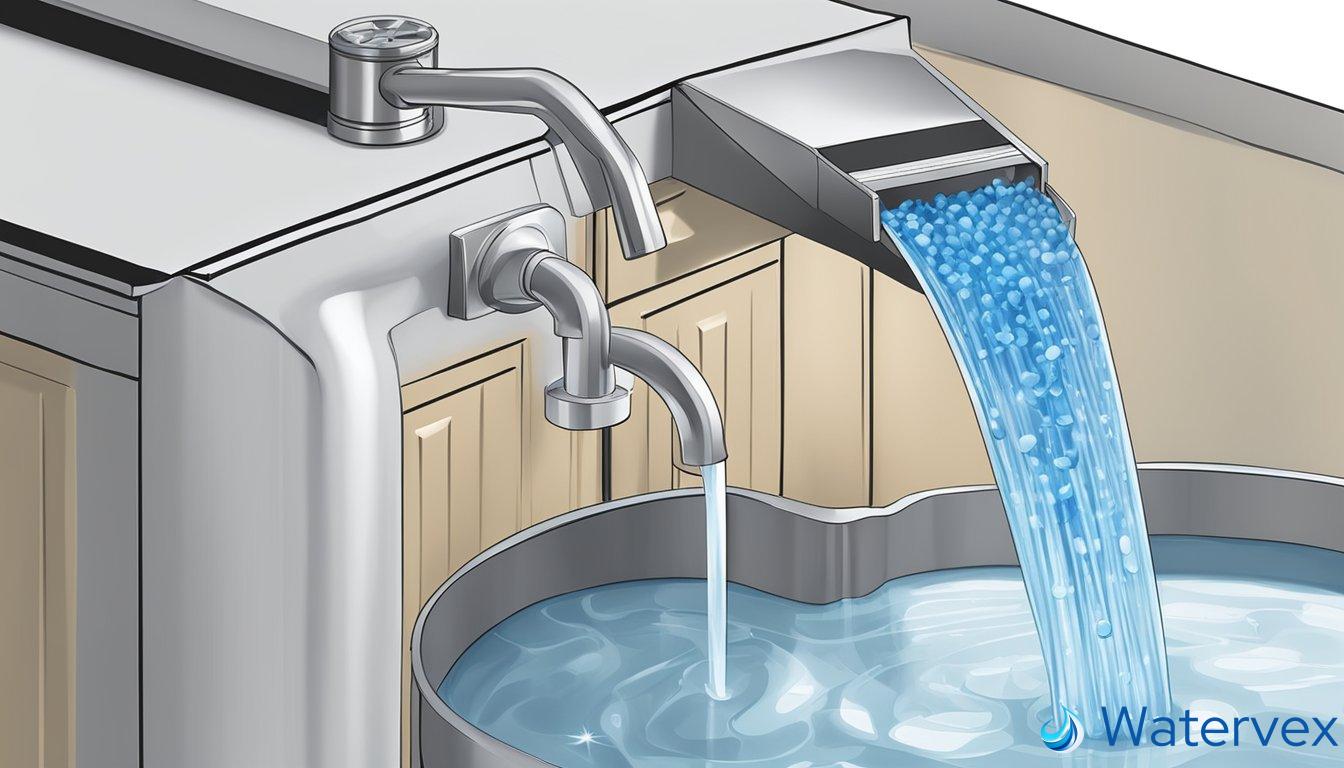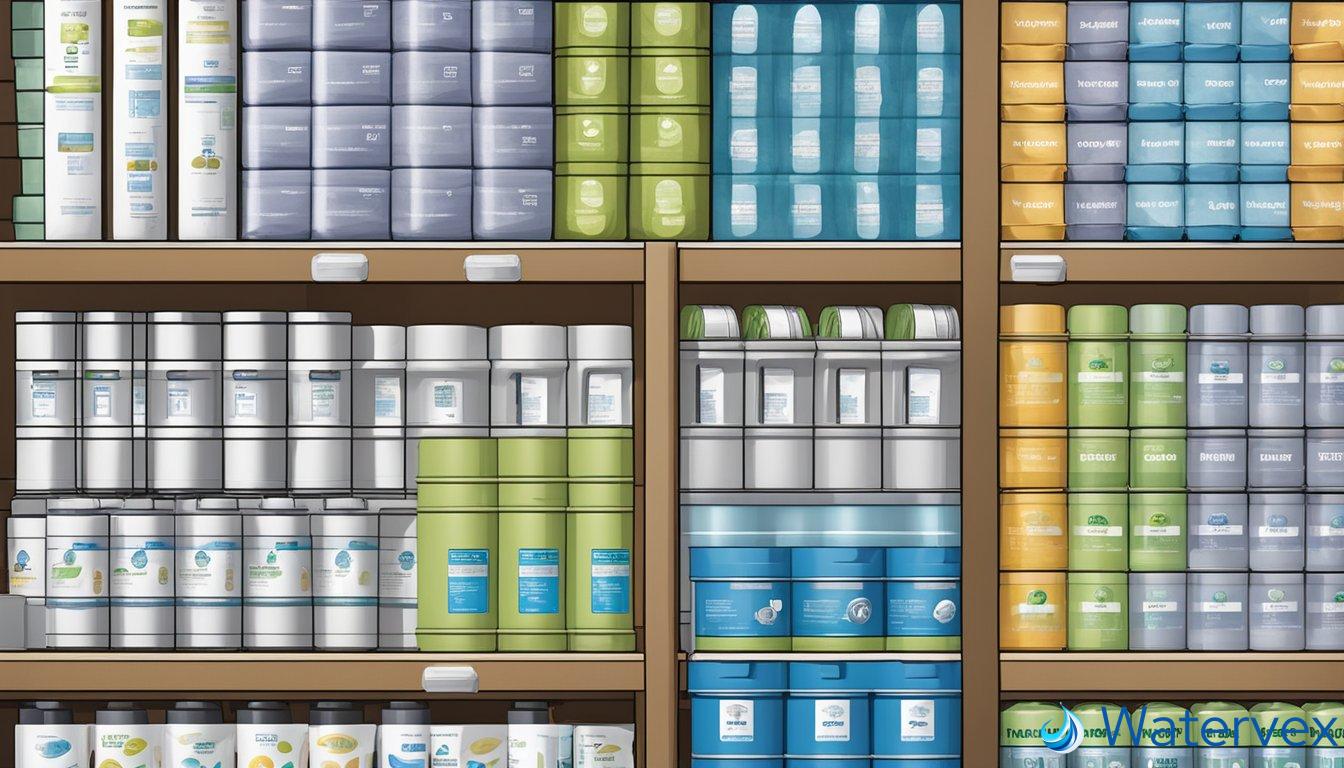Water softener pellets are essential components in managing hard water issues in your home. They make your water more compatible with soap and extend the lifespan of plumbing by transforming hard water into soft water. Hard water—which contains high levels of minerals like calcium and magnesium—can cause limescale build-up in pipes, appliances, and on dishes. Water softener systems combat this problem directly. By adding salt pellets to these systems, they initiate a process known as ion exchange, replacing the minerals responsible for water hardness with sodium ions.

Understanding the functionality of water softener pellets in your system is fundamental to ensuring it operates efficiently. Within the brine tank of a water softener system, the pellets dissolve to create a high-sodium solution. When hard water flows through the system’s resin bead-filled tank, the beads attract and hold onto the minerals, while simultaneously releasing sodium into the water. Once the beads are saturated with minerals, a regeneration cycle is triggered, where the brine solution flushes out the captured minerals and recharges the beads with sodium.
Selecting the right type of water softener pellets is a practical consideration based on your specific water softener model and your personal water quality needs. Generally, manufacturers provide guidelines for the kinds of pellets suitable for their systems—options typically include rock, solar, and evaporated salt pellets. Each type has distinct properties and purity levels that could influence your system’s efficiency and maintenance requirements.
Key Takeaways
- Water softener pellets effectively treat hard water by initiating the ion exchange process.
- The salt in the pellets works within the water softener system to remove unwanted minerals.
- Choosing the correct pellet type is crucial for optimal water softener performance and maintenance.
What Are Water Softener Pellets Used For?

Water softener pellets play a crucial role in improving water quality in your home by addressing hard water issues, which can affect everything from your skin to the longevity of your appliances.
Understanding Water Softener Salt and Pellets
Water softener pellets, or water softener salt pellets, are a selected form of sodium chloride designed specifically for use in water softener systems. These pellets work by exchanging hard water minerals like calcium and magnesium with sodium ions. This process, known as ion exchange, effectively transforms hard water into soft water, preventing the mineral buildup that can affect your plumbing and appliances.
Pellets are favored for their efficiency in this process. They are compact, and their uniform shape allows for consistent dissolution in the brine tank of a water softener, which can contribute to the efficiency of the softening process and reduce the need for maintenance.
Benefits of Using Water Softener Pellets
Using water softener pellets comes with several benefits:
Appliance Longevity:
By mitigating mineral buildup in pipes and appliances, pellets extend the lifespan of household appliances such as water heaters, washing machines, and dishwashers.Consistent Performance:
The regular shape and size of pellets promote even brine formation, which is crucial for the continuous and efficient softening of water.
To maintain the performance of your water softening system and safeguard your household appliances from the adverse effects of hard water, it’s essential to select a suitable type of salt pellet. Remember to choose pellets that are specifically crafted for water softening to ensure the best results and efficiency of your system.
How Do Water Softener Pellets Function in Softening Water?
Water softener pellets play a crucial role in transforming hard water into soft water through a sophisticated ion exchange process. Key to their effectiveness is their interaction with specific components in your water softener system.
The Ion Exchange Process
To understand how water softener pellets work, you must first grasp the ion exchange process. Your water contains minerals like calcium and magnesium—the culprits behind water hardness. When hard water flows through the resin bed in your softener, the pellets’ sodium ions go to work, replacing the hard minerals. Think of it like a game of musical chairs: sodium ions are invited to take a seat where calcium and magnesium ions used to sit on resin beads. This swap softens your water, as sodium does not cause the same hard water problems.
In simpler terms, your water softener uses sodium from the pellets to kindly escort calcium and magnesium out of your water, allowing you to enjoy the perks of softer water.
Maintaining Your Water Softener Brine Tank
Your brine tank is the ‘kitchen’ where water softener pellets get to work, cooking up the brine solution—this is where the ion exchange feast is prepared. To keep it functioning, a certain level of pellets must be maintained. If this level drops too low, or the pellets become a clog, the water softening process can be disrupted.
Here’s a quick breakdown:
- Refill pellets regularly to avoid running out.
- Prevent clog formation by using quality pellets and cleaning the tank as needed.
- Monitor hardness level of your water to ensure the system’s effectiveness.
- Regular checks help potassium and sodium levels stay balanced, key to maintaining a well-functioning resin bed.
By keeping an eye on your brine tank and ensuring it’s properly maintained, you’re ensuring that every time you turn on a faucet, your water softener system is providing you with soft, mineral-free water.
What Types of Water Softener Pellets Should You Consider?

When it comes to water softener pellets, you’ll encounter several types mainly distinguished by the salt they contain. Here are the ones that deserve your attention:
- Solar Salt Pellets: Created through the evaporation of seawater, these pellets are usually more soluble than rock salt. This makes them a reliable choice for many water softening systems, especially if yours is a single-tank softener.
- Evaporated Salt Pellets: Boasting the highest purity (nearly 100% pure salt), these pellets are likely to leave less residue, meaning less maintenance for you. They work efficiently for high-water-usage households.
Choosing between these options isn’t just a matter of personal preference; it’s about what’s functional for your specific system:
- Iron Fighter Pellets: If your water has high iron content, these pellets are specifically designed to cope with such heavy duties, helping to extend the lifespan of your system.
- Morton Potassium Chloride Pellets: An environmentally friendlier alternative, these pellets can minimize the amount of sodium released into your plumbing system.
Now, let’s talk cost. Generally, pure evaporated salt pellets tend to be pricier, but their high purity level can mean reduced maintenance costs long term. On the other hand, solar salt pellets are more economical upfront and are often entirely sufficient for many households.
Lastly, think about the environmental impact: Potassium chloride pellets are less harsh on the environment compared to sodium alternatives.
To wrap it all up, consider your water softener’s requirements, the specific needs of your household, and whether environmental impact is a deciding factor for you. Each pellet type has its own pros and cons, so weigh them according to your situation.

